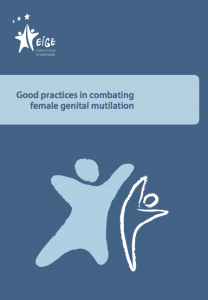 Methodology for the selection of pratices
Methodology for the selection of pratices
The criteria for the identification of practices with potential for this study were based on the action plan on good practices of the European Institute for Gender Equality (EIGE).
National researchers were given information about this plan during a briefing in June 2012. Questions on practices with potential were included in all in- depth interviews in the nine countries included in Phase II of the study. Key informants in all interviews were asked to describe examples of practices they considered to have good potential in relation to the work on female genital mutilation (FGM) in their countries. The national researchers selected the most promising practices and incorporated them into their country reports.
The practices identified were presented in each of the country reports, using a standard table template to allow for ease of comparison between countries and practices. National researchers were asked to consider and discuss each practice, reflecting on how it responded to: needs identified; results achieved; integration within a wider strategy; actors involved; availability of resources; monitoring and evaluation of the practice; and sustainability and possible transferability to other contexts, regions and/or countries. Researchers were also asked to identify which of the ‘six Ps’ — namely prevalence, prevention, protection, prosecution, provision of services and partnerships — the practices related to; in many cases it was more than one.
Selected practices covering the different Ps were presented and discussed at an experience exchange meeting entitled ‘Towards good practices in pre- vention, protection, prosecution, provision of services and partnerships in the area of FGM’ in Lon- don on 13 September 2012, attended by experts from different Member States representing a range of backgrounds and organisations. The experience exchange was an opportunity to explore, analyse and discuss the practices presented and to share learning and experiences. The presentations and subsequent discussion at the meeting enabled additional details and information to be added to each practice table.
It is important to note that this initial assessment of practices with potential for the purposes of this study is based on the analytical country reports from the nine EU Member States and the discussions and presentations at the experience exchange meeting. It does not constitute a formal evaluation but is a compilation of practices suggested by national researchers who have followed EIGE’s action plan on good practice indicators as far as possible, which have then been collated by the core team. While other practices have emerged in the course of the study that also seem relevant and interesting and show potential, it may be too early to assess their significance.
TO download, go to: http://eige.europa.eu/content/document/good-practices-in-combating-female-genital-mutilation
